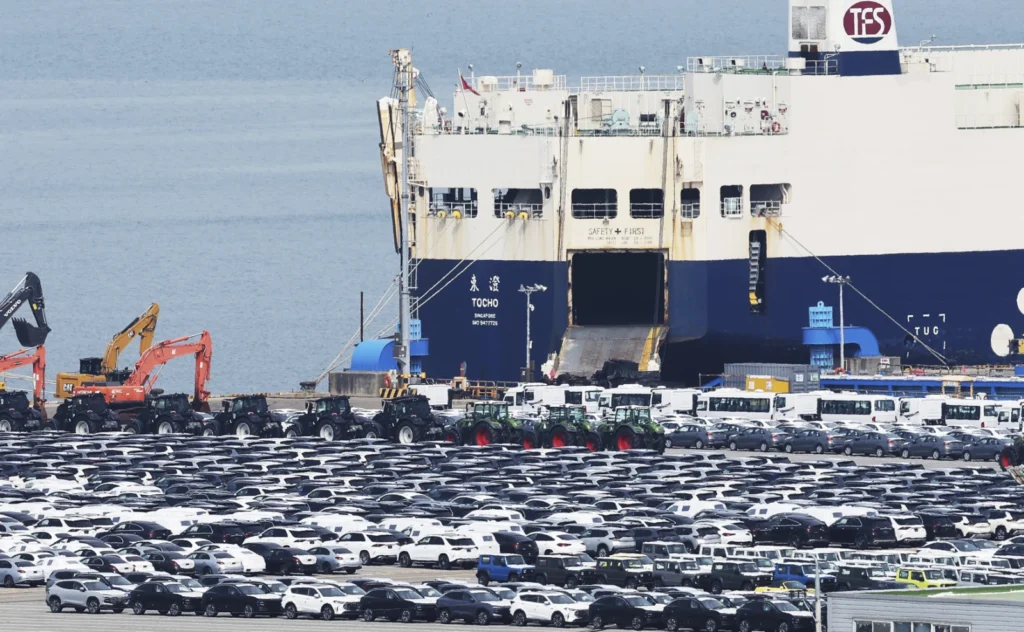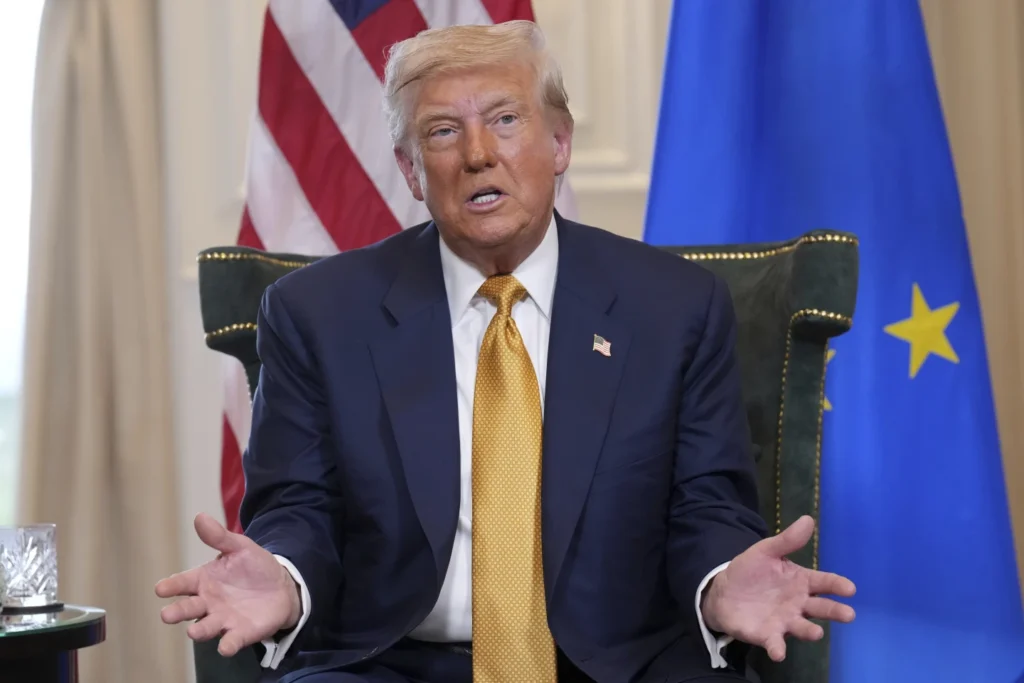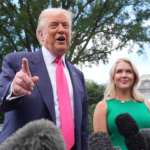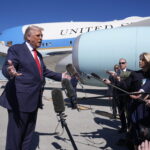Trump Delays Tariffs to August 7, Trade Uncertainty Extends Worldwide/ Newslooks/ WASHINGTON/ J. Mansour/ Morning Edition/ President Donald Trump has delayed the start of his new global tariff policy to August 7, adding another layer of unpredictability to trade negotiations. The 25–50% import taxes, previously set to begin August 1, now await updated scheduling. The move injects economic uncertainty while sparking global concern over inflation and U.S. trade leadership.

Trump’s Global Tariff Shake-Up: Quick Looks
- Tariff launch delayed: New import taxes begin August 7, not August 1
- Impacts 66 countries, the EU, Taiwan, Falklands
- Rates include 25% on autos, 50% on metals, baseline 10%
- Trump says tariffs will “make America rich again”
- EU, Mexico, and others still negotiating deals
- Legal questions arise under the 1977 emergency powers law
- U.S. Appeals Court hears case challenging legality of tariffs
- $127 billion in customs revenue collected so far in 2025
- Economists warn of higher inflation, job losses
- Trump critics cite policy vagueness, market instability
Deep Look: Trump Tariff Start Date Pushed Back, Uncertainty Grows
WASHINGTON — President Donald Trump has again altered the global economic landscape, delaying the implementation of sweeping new tariffs by one week. The announcement — made late Thursday night as he signed the executive order — pushed the start date for the updated trade policy to August 7, buying more time to finalize the complex tariff schedule targeting 66 nations, the European Union, Taiwan, and the Falkland Islands.
For weeks, Trump had insisted that August 1 would mark a pivotal day in trade history, even branding it as the moment the world would feel the impact of his “America First” tariff strategy. But the last-minute change has not only frustrated allies and adversaries alike but also thrown consumers, businesses, and markets into renewed uncertainty.
“The process is going very well, very smooth,” Trump told NBC News Thursday night. Yet he added, “That doesn’t mean that somebody doesn’t come along in four weeks and say we can make some kind of a deal.”
What’s in the Tariffs?
The revised tariff plan affects nearly $3 trillion in imported goods, imposing:
- 25% tariffs on most vehicles
- 50% tariffs on aluminum, steel, and copper
- Baseline 10% tariffs on unspecified countries
- Higher tier tariffs, such as 39% on Swiss goods and 15% on Liechtenstein, replacing previous estimates from April
While some protections remain under existing deals like the U.S.-Mexico-Canada Agreement (USMCA), Trump has shown increasing dissatisfaction with even his own past trade arrangements.
Allies Pressured, Markets On Edge
Countries still negotiating, such as Switzerland, Norway, and the EU, welcomed the delay but warned that sudden shifts risk undermining global trust. Trump’s team claims new frameworks have been negotiated with Japan, South Korea, the Philippines, and Indonesia, though specific terms have yet to be published.
On Thursday, Mexico was granted a 90-day negotiating period during which its 25% tariff rate will remain. Canada, facing a new 35% fentanyl-related tariff, received no direct contact from Trump, further straining relations.
“The only certainty is uncertainty,” said Scott Lincicome, economist at the Cato Institute. “The lack of finalized agreements means U.S. businesses are left guessing about their costs, which could stall hiring and investment.”
Legal Challenges and Political Fallout
The legality of Trump’s sweeping tariffs faces major scrutiny. On Thursday, a federal appeals court heard arguments questioning Trump’s use of a 1977 emergency powers law to justify bypassing Congress. The court has yet to rule, and the case is likely to head to the Supreme Court.
Judge Todd Hughes told a Justice Department lawyer, “You’re asking for an unbounded authority,” highlighting bipartisan concerns over executive overreach.
Meanwhile, Trump has repeatedly cited tariff revenues — which total $127 billion so far in 2025 — as proof the strategy is working. Yet inflation, supply chain disruptions, and stalled job creation cast doubt on the policy’s economic benefits.
Tariffs and Inflation: A Growing Concern
Data released Thursday showed the Personal Consumption Expenditures (PCE) index — a key inflation gauge — rose 2.6% over the past 12 months, a sign that prices are rising faster than expected.
Major U.S. companies like Ford Motor Co. and Procter & Gamble have already warned that tariffs will cut profits and raise consumer prices. Ford estimates a $2 billion hit to 2025 earnings, while P&G announced product price hikes affecting 25% of its U.S. inventory.
Federal Reserve Chair Jerome Powell responded to the tariff volatility by holding off on further interest rate cuts.
“There are many uncertainties left to resolve,” Powell told reporters. “It doesn’t feel like we’re very close to the end of that process.”
What Comes Next?
Trump’s next moves are unpredictable. While he touts the tariffs as a wealth generator and a tool to reduce the trade deficit, the U.S. manufacturing sector has shed 14,000 jobs since April. Inflation pressures are mounting, legal clarity remains elusive, and key allies are losing patience.
Yet, with Trump’s populist base cheering the tariff plan and negotiations ongoing, the global economic outlook remains highly fluid — and fragile.







